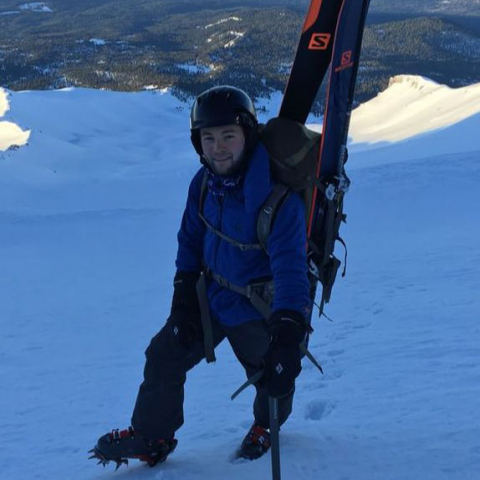The Annual Fire Probability project began in 2016. Inspired by ongoing work at Berkeley Forests, the project became a Masters of Forestry project for Berkeley Forests Policy Analyst Carlin Starrs and collaborators Dr. William Stewart, Dr. Van Butsic, and researcher Connor Stephens. The work was eventually published in Environmental Research Letters in Spring 2018.
The impact of land ownership, firefighting, and reserve status on fire probability in California
Humans have a significant impact on our environment, with anthropogenic climate change being the outstanding issue of our time. The recent increase in western wildfires—one of the most graphic examples of increasing environmental risks—is frequently linked to climate change in research and the popular press. However, the most recent “U.S. Global Change Research Program Climate Science Special Report[1]” (CSSR) notes that anthropogenic vegetation management reduced the authors’ ability to go beyond correlation to causation in explaining this increase in western wildfire frequency. That is, climate change is just one of many anthropogenic influences on vegetation, yet these non-climate factors are rarely accounted for in current research despite the scientific community’s acknowledgement that they are both significant and real.
For this project, we statistically separated vegetation management firefighting practices to determine their contribution to the increase in wildfire frequency observed in the western United States. We use data provided by the state of California on property boundaries as a proxy for vegetation management and firefighting responsibility to compare fire frequencies in areas with alternative vegetation management and fire suppression methods. To precisely estimate the effects of these factors we use a mix of pre-regression matching techniques with panel regression models. We test the effect of these factors for three broad classes of lands—forest, rangelands and shrublands—in reserve and non-reserve settings in California, USA.
Our results demonstrate that fire probabilities are effected by vegetation type, ownership, firefighting agency, and reserve status (reserved lands include areas where extractive uses are prohibited and fire suppression is less intensive), with additional increase over time across all vegetation types and ownerships. In nearly all cases, we found a significant increase in fire probability when comparing non-federal to federal ownerships, state to federal firefighting, and non-reserved to reserved lands. These were compared to three climate variables: average summer precipitation, average annual topsoil moisture, and average temperature. These results effectively tease apart the major drivers of wildfire in the west, and provide estimates as to how important each factor (vegetation management, firefighting) is to fire frequency.
Thus, even in the current era of climate change, vegetation management and firefighting decisions are still a large factor in the likelihood an area burns. It has been stated that climate change action support depends on being “real, human-caused, serious and solvable.”[2] Our results suggest that loss of sequestered forest carbon to increased wildfire frequency can be mitigated with changes in vegetation management and firefighting strategies. While more aggressive vegetation management and firefighting techniques may lead to tradeoffs with other ecological goals, our research does show that it can decrease the risk of wildfire. This research will help empower land managers and policy makers in their decision-making processes
[1] Wuebbles D J, Fahey D W, Hibbard K A, Dokken D J, Stewart B C and Maycock T K 2017 Climate Science Special Report: A Sustained Assessment Activity of the U.S. Global Change Research Program (Washington, D.C.)
[2] Supran G and Oreskes N 2017 Assessing ExxonMobil’s climate change communications (1977-2014) Environ. Res. Lett. 12
In the media:
Press Release - 2/02/2018
Final Paper:
Principal Investigators

Carlin Starrs

Bill Stewart
Berkeley Forests

Van Butsic


